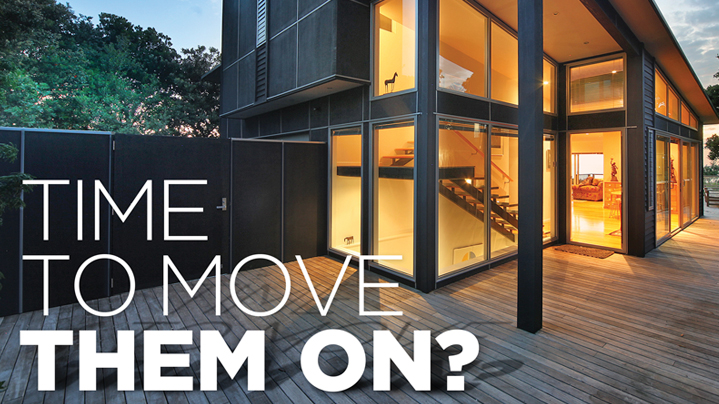Time to move them on?
Time to move them on?
Feedback from many baby-boomers across the country highlights an emerging trend – a number of their children faced with high rents and house prices are returning to the comfort of the family home, hampering them from selling up and downsizing into their new home.
It’s a quandary facing more and more parents of older children – do they hang on to the family home just in case the kids come back, or need a cheaper (and more comfortable) alternative to flatting? Or do they cut those apron strings so that they can move on from the now too-large house and find a home that’s more suited to their (not their kids) current lifestyle?
The phenomenon of adult children periodically returning to the nest has been dubbed ‘boomerang’ kids.
Hard statistics for how many adult children are living with their parents in New Zealand aren’t available but a Mintel survey in the UK showed that 27 percent of university graduates returned to the family home. In a somewhat sobering survey for many parents, almost 100,000 millenials surveyed by Aviva in the UK expected they would live with their parents forever.
In America, a poll conducted by consulting firm Twentysomething Inc. found that 85 percent of university graduates moved back home, and that roughly 13 percent of adult children aged 18-29 returned home after attempting to live on their own.
A quick google of tips for living with adult children or on how to get them to leave throws up an alarming number of sites with a wide range of advice and services. It would seem this is a more common trend than many are led to believe.
Unless children are extremely well trained in the domestic arts, their return may come with the extra burden of cooking, cleaning and laundry. Setting strict ground rules about who does what and pays for what could actually be the catalyst for those who were secretly hoping for a cushy arrangement to move on.
Of course, it’s understandbly hard for baby-boomer parents not to feel sorry for today’s young adults as they face the challenges of higher rents and property prices, difficulty getting a job and student loan repayments.
Obviously, it’s down to personal choice, but parents may be doing themselves and their off-spring a disservice by letting them stay. Moving out, will help kids learn financial and emotional independence, and avoid resentments building to the point where family relationships are damaged.
Researchers at the London School of Economics and Political Science found that parents whose adult children moved back into the family home saw a decline in their quality of life.
Closer to home, an Australian Unity Wellbeing Survey found that adult children living at home were also not as happy as their independent counterparts. People who live away from their parents also feel more connected to the community and are more satisfied with their future security than those who are living with their parents, says the survey.
So, for the sake of well-being and independence for both the baby-boomer parents and the boomerang generation of kids, it may be easier to set stronger boundaries and help fund their children in the short term into a flat or new home, rather than enter the murky waters of having kids as long-term ‘flatmates’.
Alternatively selling the larger family home and buying a smaller one, could be a better decision leaving money to invest some of the returns towards helping the kids. Or there’s the possibility of a joint property venture, using the spare money to fund a house deposit, while they service the mortgage repayments. Parents get to feel good, but also benefit from the property’s capital gain. Make sure a legal agreement is in place beforehand so that everyone knows who owns what proportion and who bears what responsibilities.
If chopping those apron strings is just too painful or the boomerang kid really does need somewhere to live, it could be time to explore if the family home could be replaced with one that better suits an adult-sharing situation.
The classic granny flat scenario is one; properties with these sorts of secondary dwellings are becoming more common place across the country. Or a property could be found that has room for a mobile tiny home in the backyard or has a garage to convert to accommodation. A home that has a good guest room set-up, with an ensuite and enough room for a sitting area, and with good separation from the rest of the house is another option.
This could solve two problems: providing space for your kids when they need it, and the secondary dwelling or ‘pimped-up’ guest room could be used as an Airbnb offering, and earn money, when the kids aren’t in residence.
It’s good parenting and a wise investment all in one house move.
Whatever the choice, many life skills coaches agree: set a date or an age limit to children still living at home. And stick to it. Either that or start planning revenge – that’s the day parents rock up to their children’s door and announce that they’re now going to live with them!
Read more...
[Download PDF]